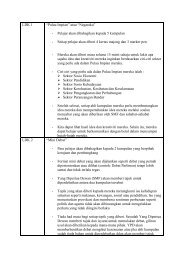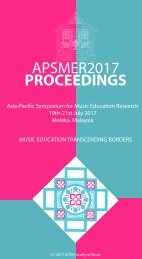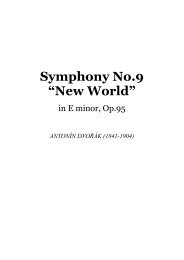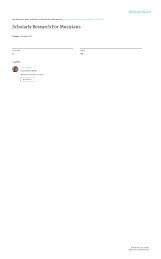APSMER2017 PROCEEDINGS
You also want an ePaper? Increase the reach of your titles
YUMPU automatically turns print PDFs into web optimized ePapers that Google loves.
Proceedings of the 11th Asia-Pacific Symposium for Music Education Research<br />
(APSMER 2017) 19th to 21st July 2017, Melaka MALAYSIA<br />
proposed expression. They felt insecure and the obtained expression was<br />
gradually diminished in each recording.<br />
On the other hand, the players experienced an assent and easiness<br />
when they realized the effect of the teacher’s direction.<br />
Aya: I thought that he was pushing the tempo while he was conducting,<br />
but it encouraged me to exceed my limit.<br />
Seiko: I thought that I felt more unreserved to play the music with his<br />
conducting, too. It was the most cohesive performance in this<br />
session, I suppose.<br />
In the recording right after the scene, the players made a drastic<br />
change of musical expression in not only tempo, but also in dynamics and<br />
articulations.<br />
Discussion<br />
Firstly, none of the three teachers brought definitely predetermined plans of<br />
musical expression as their goal (Karlsson & Juslin 2008). The teachers’<br />
words “Ichigo-Ichie” shows that they evidently recognized the importance to<br />
generate musical expression in a reciprocal process with the players on site.<br />
To prepare for the reciprocal instruction, they gave the players several<br />
question to discern their primary ideas and understanding of the music.<br />
Secondly, not only teachers but also players collaboratively made<br />
decisions of musical expression. The teachers rarely gave concrete<br />
propositions about changes of tempo and dynamics. Instead, they mainly<br />
facilitated the players to generate and reframe their own ideas of musical<br />
expression by inspiring their imagination with intentionally ambiguous<br />
words. These tactics contributed new perspectives for the players to evoke<br />
another way of expression that they had never thought. The teachers accepted,<br />
impelled and sometimes inhibited the players’ new idea as feedback. In the<br />
last phase of their session, the teachers requested players to listen to each<br />
other’s sounds to make a coherent expression of the music by consolidating<br />
individual musical ideas. These structures of the sessions were very similar<br />
to the improvisational process that Fournier (2011) described the<br />
41








